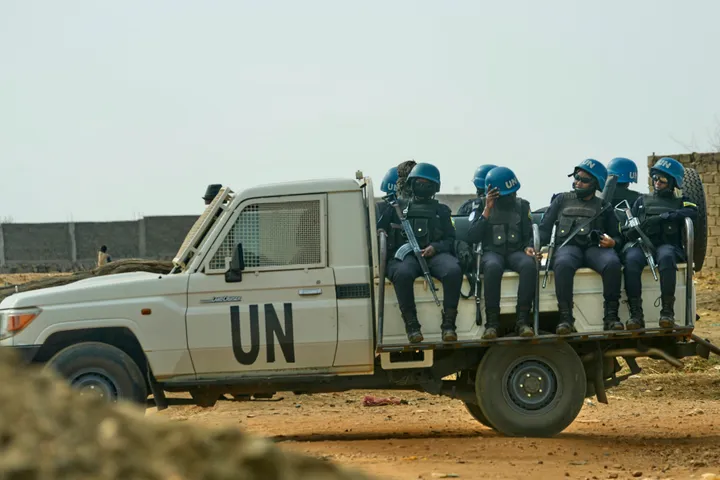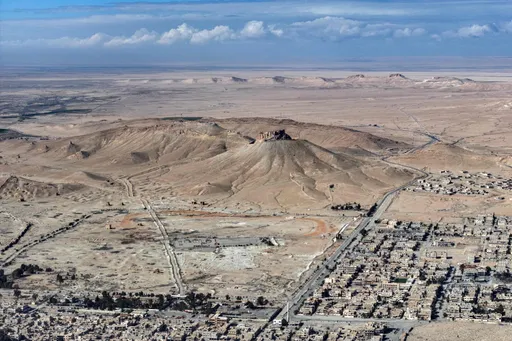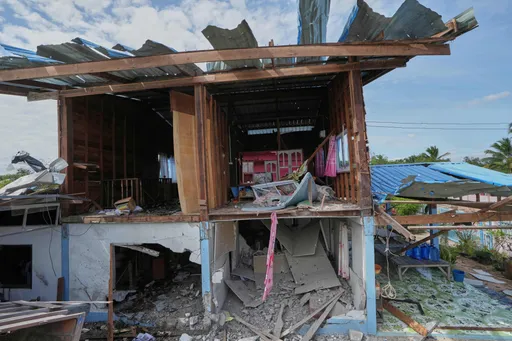A siege is a military operation in which attacking forces encircle a territory, cutting off movement and supplies, while using all means of warfare to force the surrender and capitulation of those inside, including civilians. The use of terror to break the will of a hostile population is one of the oldest forms of warfare, and best exemplified in the biblical story of Jericho.
After surrounding the walled and ancient city for seven days, located in what is now present-day occupied Palestine, Joshua commanded the Israelites to kill “every living thing in it – men and women, young and old, cattle, sheep and donkeys,” according to the Bible (Joshua 6:21).
Four thousand years later, the Damascus suburb of Eastern Ghouta has been under a similarly brutal siege, but from the Assad regime since mid-2013.
In May of last year, however, Turkey, Russia, and Iran agreed to a cease-fire deal in Syria, one that marked four zones in which Assad’s forces and opposition groups would cease “hostilities.” These “de-escalation zones” or “safe havens” were an attempt to reduce the violence, particularly by grounding Assad’s air force from flying over and dropping ordinance on the designated areas.
Despite the agreement reached in Astana, the Kazakh capital, the Syrian regime has not only continued to attack civilians and rebels in the de-escalation zones, but also escalate its medieval siege of Eastern Ghouta, a siege that includes round-the-clock shelling, mortar fire, air-strikes, and unimaginable human suffering.
The rising civilian death toll is shocking, and the methods deployed by the Assad regime are far crueler than anything described in the Bible.
Last week, the United Nations human rights chief condemned Syrian regime forces for the upsurge in civilian casualties, and its increasing use of airstrikes and artillery shelling of the besieged suburb, observing that more than 100 civilians, including 21 women and 30 children have been killed since the start of 2018.
This coming on the back of intensified Assad regime attacks on Eastern Ghouta during the last six weeks of 2017. The World Health Organization reported that 84 civilians were killed and 659 injured in a three-day period in November alone, and added that more than 200 mortar shells fell on heavily populated areas from 14 to 17 November.
“The suffering of the people of Syria knows no end,” said UN High Commissioner for Human Rights Zeid Ra'ad Al Hussein.
Evidently, the moral depravity of the Assad regime knows no end, either. On Monday, the National Coalition of Syrian Revolution and Opposition Forces released a statement claiming the regime attacked civilians in Eastern Ghouta using chlorine gas on January 22.
“Credible reports indicated that the attack caused dozens of asphyxiation cases among civilians in the district of Douma and that most of the injured were women and children,” reads the coalition’s statement, a claim echoed by the Syrian Observatory for Human Rights (SOHR), who added that 21 people had been hospitalised as a result of the chemical weapons attack.
Fewer than 400,000 Syrians reside in the Eastern Ghouta area today; a number that includes approximately 100,000 internally displaced people. When I asked Hassan Hassan, a noted Syrian born author and expert on the conflict, he said that the number of opposition fighters number only in the hundreds.
“Assad has been focusing on this area as the strategic belt of Damascus. Ghouta also overlooks an important highway linking Damascus to Homs and other routes important for supply lines and access to hills on the way to Palmyra and the Syrian desert, where the regime has become a lot more active over the last year,” Hassan told me, adding that the regime has deployed various tactics to “neutralise” the outskirts of Damascus, “either through complete destruction, forcing mass displacement, or through local ceasefires.”
Life under siege in Eastern Ghouta is every bit as horrific as one might imagine. “Shops are empty, streets are in ruins, the shelling rarely stops,” a 20-year-old resident told Syria Deeply. “Sometimes it feels like a Hollywood movie, especially when I learn what people are coming up with in order to survive.”
Food and medical shortages are having a dramatic impact on the wellbeing of children, with UNICEF reporting that 11.9 percent of kids in Eastern Ghouta under the age of five are suffering from severe malnutrition.
“This is the highest rate ever recorded in Syria since the conflict started,” the aid agency stated, a crisis exacerbated by the now unaffordable cost of whatever food remains on grocery store shelves, with the World Food Program observing that the typical price of a basket of food in the area costs 8 times the national average, amounting to a staggering US$521.
Staples such as bread and rice are either unaffordable or unattainable for most residents, and images of starving children bring back memories of the world’s worst famines. A reminder that starvation is often the weapon of choice for attackers and tyrants who seek to break the will of a people they wish to subdue.
“We are dying here. If dying from hunger doesn’t kill us, the bombs will, or the freezing cold will do it,” a 27-year-old aid worker, who wishes to remain anonymous out of fear of Assad’s security forces, told me.
An absence of medical care is another killer. Attacking hospitals and medical facilities has been a tactic used by Assad since the conflict began five years ago. Not only has the regime struck more than 300 medical facilities, but also has “assassinated, bombed, and tortured to death almost 700 medical personnel,” according to Physicians for Human Rights.
A doctor in Eastern Ghouta told Al Jazeera that babies are dying from a lack of access to routine medical care. “As a paediatrician, I feel that the children of the world are my children. I suffer for their suffering,” he said. “How do you feel if your child dies before your eyes and you cannot give him anything? It is something painful.”
This human catastrophe, one of Assad’s making, is taking place in almost complete media silence. Simply, the world has lost interest in the lives of those besieged in Syria.
Eastern Ghouta promises to become “the next Aleppo unless the international community increases pressure on besieging parties and their allies,” says The Syria Institute.
More than 31,000 died in Aleppo, and the city was reduced to rubble. A similar fate awaits Eastern Ghouta if the international community, including the UN Security Council, fails the people of Syria again.
























